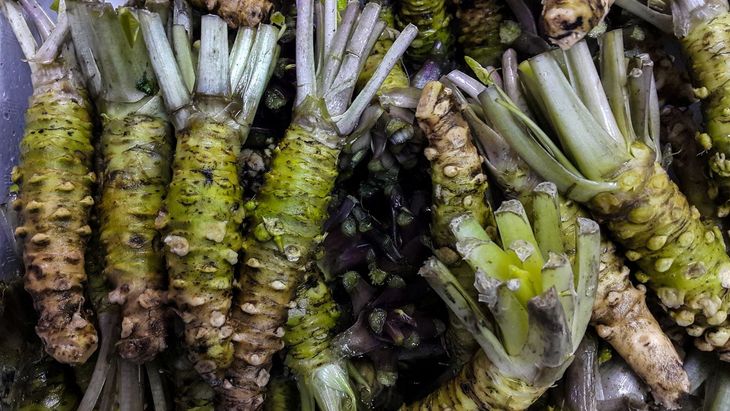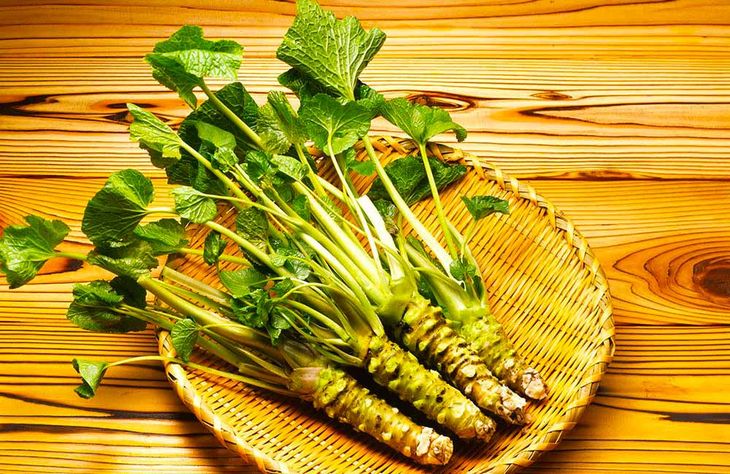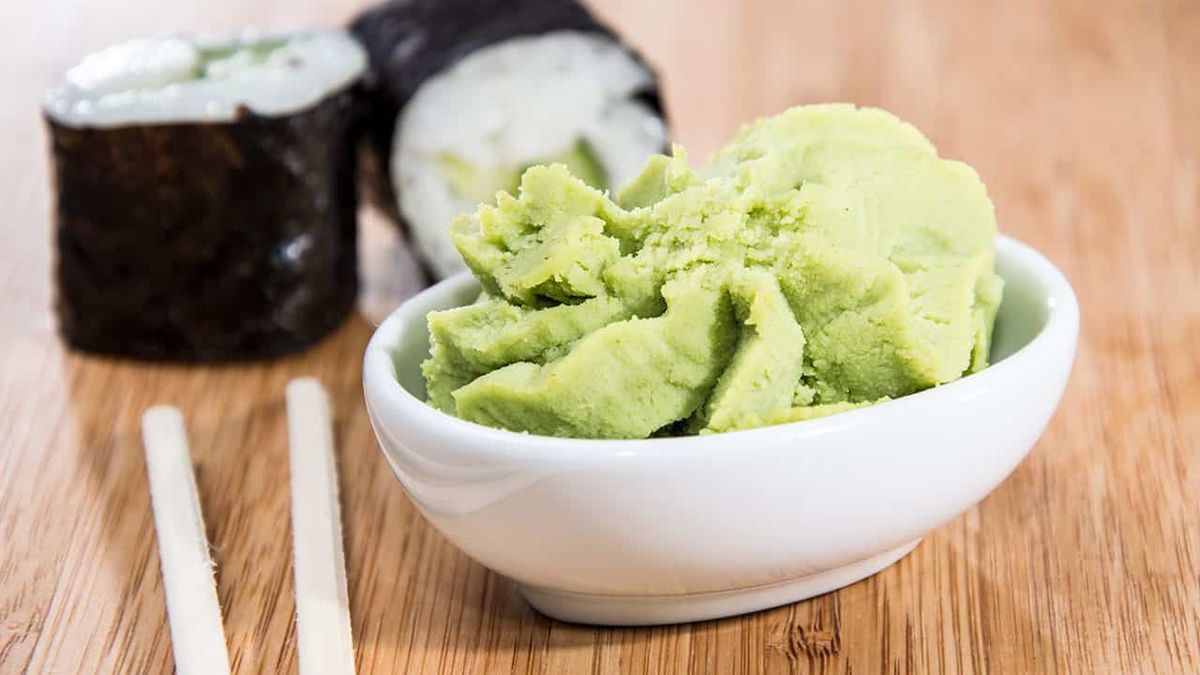With globalization, the expansion of oriental cuisine around the world was key to understanding why there is a high demand for the product. Wasabi is a plant from the same family as horseradish and mustard, which is why it is also known as the “Japanese horseradish”. What matters for culinary purposes is its stem, widely used in preparations, so its price in the market is elevated.
wasabi plant 4.jpg
The best known varieties of Eutrema japonicum are the daruma and the mazuma. It is from this plant, and more specifically from its rhizome or underground stem, that the real wasabi comes from. This supplement is used in very small amounts as a supplement to sushi and is characterized by its green hue and a highly spicy flavor. “Let’s start with the basics: what you find in the West is not real wasabi, it’s fake wasabi”says chef Aya Yamamoto of Gastronomia Yamamoto in Milan.
Why is the wasabi plant so expensive?
It is undoubtedly one of the most expensive on the market, especially the stem, which is the part used in gastronomy: a kilo of this part can reach up to 300 dollars. The reason for its high price must be found in the large number of Water that this plant needs to develop, in the exhaustive care it needs to grow and in its slow growth since it is necessary to wait several years until the plant has a stem that can be used for gastronomic purposes.
In Japan, wasabi was originally used for its antibacterial properties, especially for food preservation, before the invention of refrigerators. It was also used in medicine as a digestive and antiseptic and it was only in the 17th century that it began to be consumed as food.
In this way the delicate plant is one of the most difficult to cultivate, since needs permanent rooting in water and cool weather (10-15 degrees Celsius) without direct sunlight. Outside of Japan, it is grown in countries such as China, Taiwan, New Zealand and Australiaalthough it has also been cultivated in some places in Spain and Latin America.
wasabi plant 2.jpg

“In Japan, what we call ‘hon’ wasabi, meaning ‘authentic’ or ‘indigenous’, is very expensive,” explains Aya. “A kilo costs almost 300 dollars.” To keep costs down, most wasabi pastes on the global market are made from the rhizome of horseradish, from the same family as wasabi, mixed with green food coloring and reduced to paste. Sometimes mustard is also added, along with a small amount of real wasabi or dried wasabi powder.
How to plant wasabi in your house
If you think about the alternative of having your own wasabi plant, here are some recommendations. Keep in mind that it is one of the most difficult plants to grow, so patience is essential.
First, wasabi needs a humid environment and a temperature without sudden changes and moderate. The ideal temperature for its cultivation is between 10 and 15 degrees, mixing cold and humidity.
The best way to achieve the right conditions is to use a greenhouse that will allow you to control the temperature. It is essential that the space where you grow it does not have direct exposure to the sun, since it does not tolerate strong light well. To avoid this problem, it is recommended to protect it with other taller plants, just as it occurs in its natural habitat.
wasabi plant 1.jpg

The soil where you are going to plant the wasabi must be composed of a mixture of an organic fertilizer and another rich in sulfur. The land must have a pH (between 6 and 7) and have a good drainage so that the plant is always moist but does not get waterlogged. From here you can transplant it.
If you start the sowing from scratch, using the seeds, it is necessary to keep them moist for one or two days before planting them. The trick is that during the night before, put them in a bowl and cover them with distilled or demineralized water.
The goal is always to keep the seeds soaking as this will help them to germinate better. The next morning, I put the seeds in the soil and press gently. Once this is done, it is important to keep them always moist, just like the soil, but without adding excess water, avoiding puddles.
Special attention should be paid to this, since due to the large amount of water that it is always surrounded by in its natural environment, wasabi is prone to diseases such as fungus. With all these tips and a good dose of patience and also some luck, in about two years you will be able to have your wasabi at home.
Source: Ambito
David William is a talented author who has made a name for himself in the world of writing. He is a professional author who writes on a wide range of topics, from general interest to opinion news. David is currently working as a writer at 24 hours worlds where he brings his unique perspective and in-depth research to his articles, making them both informative and engaging.




